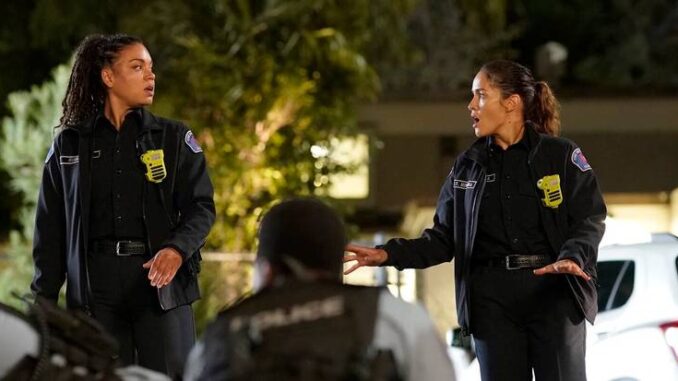
The Unseen Architecture of Empathy: Station 19 Expands Its Crisis One Program Behind the Scenes
The world of television, with its polished veneer and seamless narratives, often feels like a magic trick. We see the dramatic rescue, the heartfelt conversation, the pivotal turning point, and rarely glimpse the intricate machinery whirring beneath the surface. But for a show like Station 19, which increasingly blurs the lines between entertainment and social commentary, the magic trick is underpinned by a profound and expanding commitment to its core messages. Nowhere is this more evident than in the behind-the-scenes expansion of its groundbreaking "Crisis One" program – a fictional initiative that, ironically, has demanded very real, tangible growth from the show's production itself.
Initially conceived as a progressive, yet relatively contained, storyline, Crisis One emerged as a bold counter-narrative to traditional emergency response. Its premise – pairing a firefighter with a mental health professional to de-escalate crises without police intervention – resonated deeply with a society grappling with police reform and mental health awareness. On screen, it was a breath of fresh air, offering hope and nuance. Behind the scenes, however, its organic growth from a compelling concept to a central pillar of the series has necessitated a complete rethinking of production logistics, creative investment, and even the very mission of the show.
The expansion began, as all good stories do, in the writers' room. What started as a few episodes featuring Vic Hughes and Dean Miller, grappling with the complexities of this new approach, quickly blossomed into a narrative imperative. Showrunners and writers, fueled by both audience reception and a genuine desire to reflect contemporary conversations, found themselves digging deeper. This wasn't merely about writing more Crisis One calls; it was about understanding the systemic issues it addressed. This meant a significant increase in research. Consultants – mental health experts, social workers, community organizers – moved from occasional guests to integral voices in the story development process. The whiteboards that once outlined simple rescue scenarios began to diagram intricate flowcharts of mental health services, de-escalation techniques, and the socioeconomic factors contributing to crises. The hum of debate in the writers’ room now often centered on the ethical nuances of intervention, the limits of the program, and its potential for real-world application.
This intellectual expansion swiftly translated into tangible demands on the physical production. Crafting the visual identity of Crisis One became paramount. The original "Crisis One van," initially a modified prop, evolved into a recurring character itself, requiring dedicated attention from the art department. Its interior had to be designed not just for a few scenes, but for multiple, often intimate, two-hander sequences. This meant more detailed set dressing, specialized props reflecting a mobile crisis unit – from first-aid kits tailored for mental health needs to tablets used for resource access – and a consistent aesthetic that communicated both professionalism and approachability. The costuming department, too, found itself developing distinct Crisis One uniforms, subtle yet significant indicators of this specialized unit, differentiating them from standard firefighting gear while still maintaining a link to Station 19.
The most profound expansion, perhaps, lay in the increased demands on the actors and directors. What was once a unique challenge for a handful of performers became an ongoing masterclass in portraying empathy and restraint. Actors like Barrett Doss (Vic) and previously Okieriete Onaodowan (Dean) had to immerse themselves in specialized training, learning the delicate art of active listening, non-verbal communication, and de-escalation. Their performances, once focused on the adrenaline of a fire, now required a different kind of intensity – one of quiet observation and profound emotional intelligence. Directors, in turn, had to re-evaluate their visual language. The fast-paced, dynamic camera work suited for fires often gave way to longer takes, tighter close-ups, and more observational framing, allowing the nuanced performances and the unfolding of a human crisis to breathe. Shooting schedules had to accommodate these more delicate, dialogue-heavy scenes, often requiring more takes and specialized lighting to convey the appropriate mood.
Beyond the immediate production values, the expansion of Crisis One behind the scenes has also required a broader buy-in from the network and an increased allocation of resources. More screen time dedicated to the program means more budget for specialized consultants, for location scouting that reflects diverse community settings, and for the sheer personnel required to bring these complex storylines to life. It signals a network's confidence not just in the show's entertainment value, but in its capacity to drive meaningful conversations.
In essence, the "Crisis One" program in Station 19 is no longer just a plot device; it is an active testament to the show's evolving ethos. The behind-the-scenes expansion – from the dedicated research in the writers' room, to the meticulous design by the art department, the specialized training for actors, and the intentional direction on set – is a tangible manifestation of a creative team deeply invested in portraying a more compassionate, community-centric vision of emergency response. When we watch a Crisis One call unfold on screen, we are not just seeing a fictional scenario; we are witnessing the carefully constructed, empathetically driven architecture built by hundreds of dedicated individuals behind the scenes, all working to illuminate the unseen battles and the potential for a different kind of heroism. The magic trick of television endures, but in this case, the illusion is built on a foundation of very real, very intentional purpose.
